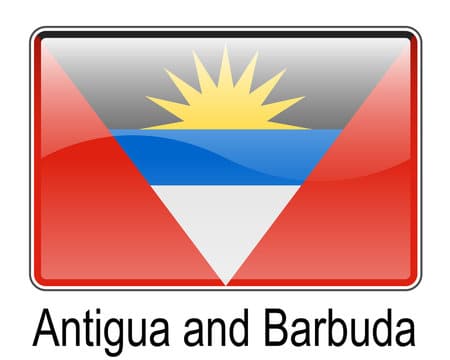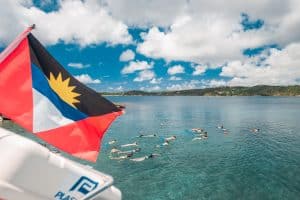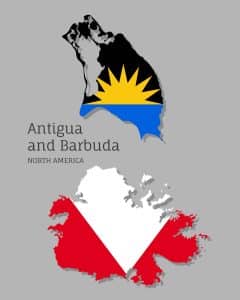Metro
Antigua and Barbuda population, official language and more…

Antigua and Barbuda have a parliamentary democracy with a bicameral legislature and a governor-general representing the British monarch as head of state.
Antigua and Barbuda have a mixed economy based on tourism, financial services, and agriculture. They are also known for their cricket team and their carnival celebrations.

Antigua and Barbuda

Map of Antigua and Barbuda
The Population: Antigua and Barbuda have a population of about 98,000 people, with most of them living in Antigua. The population is mostly of African descent, with some European, Asian, and indigenous minorities. The population is expected to reach 100,000 by 2023. The Landmark: Antigua and Barbuda have many natural and cultural landmarks that attract tourists and locals alike. Some of the most famous ones are: Nelson’s Dockyard, a historical naval base and UNESCO World Heritage Site; Shirley Heights, a scenic lookout point with panoramic views of the island and the sea; Devil’s Bridge, a natural rock arch formed by the waves; Barbuda Caves, a series of limestone caves with ancient rock art; and St. John’s Cathedral, a Gothic-style church that dominates the skyline of the capital city. The Official Language: The official language of Antigua and Barbuda is English, which is spoken by almost everyone. However, many people also speak a local dialect called Antiguan Creole, which is influenced by African languages and other Caribbean creoles. Some words and phrases from Antiguan Creole are: wah gwaan (what’s going on), me nah know (I don’t know), likkle bit (a little), and big up (congratulations or respect). The Culture: Antigua and Barbuda have a rich and diverse culture that reflects their history and geography. Some of the main aspects of their culture are: music, which includes genres such as calypso, soca, reggae, steel pan, and zouk; dance, which includes styles such as quadrille, masquerade, maypole, and limbo; cuisine, which includes dishes such as fungie, pepperpot, ducana, saltfish, and jerk chicken; sports, which include cricket, football, sailing, and horse racing; and festivals, which include carnival, independence day, sailing week, and emancipation day2 . The Economic Stability: Antigua and Barbuda have a stable economy that is based on tourism, financial services, and agriculture. The country has one of the highest GDP per capita in the Caribbean region, with an estimated value of $17,624 in 2019. The country also has a low inflation rate, a moderate public debt, and a favorable business environment. However, the country also faces some challenges such as high unemployment, income inequality, environmental vulnerability, and dependence on external shocks. The GDP: The GDP of Antigua and Barbuda is the total value of all the goods and services produced in the country in a year. The GDP of Antigua and Barbuda in 2021 was $1,471 million, which is less than 0.01% of the world economy. The GDP per capita, which is the GDP divided by the population, was $15,780, which is higher than the world average. The GDP growth rate, which is the percentage change in GDP from one year to another, was 3.03% in 2017. The Currency: The currency of Antigua and Barbuda is the Eastern Caribbean dollar (XCD), which is also used by seven other Caribbean countries. The Eastern Caribbean dollar is pegged to the US dollar at a fixed rate of 2.7 XCD = 1 USD. The Eastern Caribbean dollar is issued by the Eastern Caribbean Central Bank (ECCB), which is the monetary authority for the eight countries that use it . The Food: The food of Antigua and Barbuda is influenced by the cuisines of Africa, Europe, Asia, and other Caribbean islands. Some of the typical dishes are: fungie, a cornmeal porridge similar to polenta; pepperpot, a spicy stew made with meat, vegetables, and spices; ducana, a sweet dumpling made with grated sweet potato, coconut, and spices; saltfish, a salted cod fish that is boiled or fried; and jerk chicken, a grilled chicken marinated in a hot sauce made with Scotch bonnet peppers . Major Cities: Antigua and Barbuda have two major cities: St. John’s and Codrington. St. John’s is the capital and largest city of Antigua and Barbuda, with a population of about 22,000 people. It is located on the northwest coast of Antigua and is the main commercial and cultural center of the country. Codrington is the capital and only town of Barbuda, with a population of about 1,000 people. It is located on the west coast of Barbuda and is known for its pink sand beaches and wildlife sanctuary. Major Airport, Sea Port and Schools: Antigua and Barbuda have one major airport, one major seaport, and several schools. The major airport is the V.C. Bird International Airport (ANU), which is located on the northeast coast of Antigua and serves as the main gateway to the country. It handles domestic and international flights from various airlines and destinations. The major seaport is the St. John’s Harbour, which is located on the northwest coast of Antigua and serves as the main port for cargo and cruise ships. It has several terminals, docks, and facilities for different types of vessels. Some of the schools in Antigua and Barbuda are: Antigua State College, which offers tertiary education in various fields; Antigua Girls’ High School, which is one of the oldest secondary schools in the country; Island Academy International, which is an international school that follows the International Baccalaureate curriculum; and Codrington School, which is a private school that offers primary and secondary education on Barbuda.





